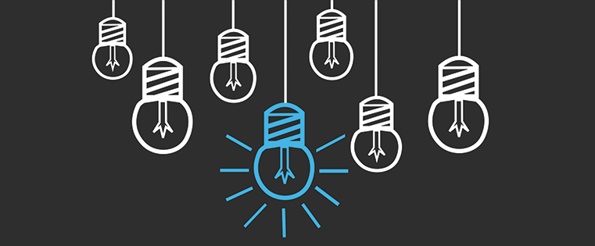

"Creativity can solve almost any problem. The creative act, the defeat of habit by originality, overcomes everything."
This quote from George Lois, the legendary ad man who created iconic work for Xero and MTV and some of the most iconic Esquire covers, sums up why brands hire agencies. They want to tap into a group of individuals who can solve business problems with creative ideas.
And agencies need to be able to depend on their staff to generate these ideas -- day after day, month after month. Without this, there's not much future for their firm.
But while many firms would like to think they are fostering innovation and ideas, instead they have structures, practices, and leaders who create an environment that is actually hostile to creative output.
Without even realizing it, they are smothering the creative flame that attracts their clients. Here's how:
9 Ways to Kill Creativity in Your Agency
1) Discourage Creative Disputes
Healthy creative disagreements can actually generate more original ideas according to a study that found social conflict increases the number of viewpoints and perspectives from a group.
Charlan Nemeth of UC Berkeley analyzed companies such as Pixar and found that conflict is essential to the ideation process, stating that the absence of conflict can mean that a team lacks ideas and is homogenous in thought. Healthy debate in companies -- and encouragement of this through practices at companies such as Pixar where morning meetings consist of criticizing the previous day’s work -- was shown to increase idea production by 25%. However, arguing just to argue isn’t productive. Pixar’s critique process -- also known as “shredding” -- requires that a critique includes at least one way to make the project better, creating a tone of positivity where the end goal is improvement, not a public lashing.
2) Rely on Group Brainstorming
It typically goes like this: You win a new project and client -- one you really, really wanted. The agency CEO and high-level stakeholders call an “all hands on deck” brainstorming meeting. The result? A mess of people in a room where only a handful of individuals speak while the rest of the team catches up on client emails and browses BuzzFeed.
Brainstorming meetings can work, but you need a structure for making them productive. One strategy that has been shown to be more effective is brainstorming done using an online messaging app, such as Slack or HipChat. A study found that when ideas can been seen by the entire team and they can consume these in a low effort way and respond, it produces more unique ideas.
3) Establish Consequences for Mistakes
For your team to tap into their creative mindset, they have to know that it is OK to make mistakes. It’s even encouraged. This isn’t to say that you should bring all 15 drafts of ad to the client for review. However, the pursuit of perfection is in opposition to creative output.
In Trust the Process: An Artist’s Guide to Letting Go, Shaun McNiff wrote: “When asked for advice on painting, Claude Monet told people not to fear mistakes. The discipline of art requires constant experimentation, wherein errors are harbingers of original ideas because they introduce new directions for expression. The mistake is outside the intended course of action, and it may present something that we never saw before, something unexpected and contradictory, something that may be put to use.”
This can be especially dangerous now as agencies want to rely on what is known to work to reduce risk of losing the relationship. Create a process for experimentation and testing to show the client that the final approach is the right one.
4) Tease More Money as Motivation
Teresa Amabile, who has studied creativity-killers and wrote a seminal piece on the subject in Harvard Business Review, wrote, “The most common extrinsic motivator managers use is money, which doesn’t necessarily stop people from being creative. But in many situations, it doesn’t help either, especially when it leads people to feel that they are being bribed or controlled.”
Money doesn’t make people interested in and driven to solving problems. It may force someone to get the job done -- and even perform above standards -- but it fails to increase intrinsic motivation, which Amabile found is the key to increasing creativity.
This intrinsic motivation is also related to grit, which is used to describe passion and perseverance and has been shown to be an indicator of future success.
5) Promote Micromanagers
Managers and directors who lack the ability to delegate or allow team members to find an independent path to a solution can inhibit creative output.
First of all, a micromanager can cause employees to become disengaged as they feel they have no ownership over the process or the end result. It also prevents people from gaining experience and confidence in a role.
While oftentimes, the controlling manager is simply trying to improve efficiency and get things accomplished in the “right” way, the result is a dispassionate team who feel stifled and bored.
This can also apply to implementing processes so strict they leave little room for interpretation. Consider this: In 2000, the newly appointed CEO of 3M (the creator of Post-It Notes and masking tape) implemented a management technique known as Six Sigma that would “decrease production defects and increase efficiency.” This worked well in reducing manufacturing errors, but the company’s percentage of sales from new products slipped to one-quarter from one-third in the next five years. New products were restricted to those whose profit viability was a known quantity. And the process-focused approach to producing products and ideation broke down the culture of innovation the company was once known for.
6) Constantly Change the Goal
So you don’t want to limit a person’s autonomy through micromanagement, but you obviously still need your team members to produce work that the client will love. To allow people to be creative with the route they take, you need to give them a destination -- or a goal.
John Irving, the author of Cider House Rules, The World According to Garp, and 12 other novels, is famous for knowing for creating highly detailed outlines of his book and writing the ending before he starts the novel. He told NPR: "I always know where it's going. I'm writing toward a sentence, usually to much more than a sentence, to many paragraphs, close to a last chapter -- it's like a piece of music that you're writing toward: This is how it sounds when I get to the end. Because I wouldn't know how I'm supposed to sound at the beginning unless I knew how I was going to sound when I got there."
Knowing the end gives purpose to everything else you create. Before a project ever starts, your team needs to have a clear understanding of what the goal is and what pain point the completed work should solve.
You should also prevent this from changing -- if possible. A constantly evolving end result only causes confusion and frustration. It also leads to an inferior end product as most people will simply adjust the existing work to fit ca changing goal, rather than start over with a unique approach for the problem.
7) Hire Similar People
At the ANA Conference in fall of 2015, PepsiCo’s Brad Jakeman said, "Innovation and disruption does not come from homogeneous groups of people."
The lack of diversity of race, background, and culture has become a growing issue for agencies as brand execs become more concerned with the fact that the people producing their advertising and marketing work do not reflect a diverse audience.
This lack of diversity is also problematic from a creative standpoint. Teams made up of individuals with unique perspectives and experiences and knowledge are more likely to challenge one another. It is less likely that teams of people who look alike and think alike and grew up in similar ways will change someone else’s perspective or be able to cause someone else to reconsider their view of a problem or solution.
As Amabile wrote in Harvard Business Review, “Because when teams comprise people with various intellectual foundations and approaches to work -- that is, different expertise and creative thinking styles -- ideas often combine and combust in exciting and useful ways."
8) Rush the Process
Deadlines and restrictions on the creative process are necessary. But rushing a project because of a lack of communication or not building in enough time for creative incubation from the beginning will only result in mediocre work.
There needs to be some buffer for mulling over a problem and possible solution -- time for even forgetting about the issue and then returning to it with a fresh perspective. Time for inspiration to strike -- if you believe in that -- or time to just sit down and struggle through the problem. Without time, a person simply relies on going through the motions of doing the work.
9) Force Creative Output
Putting constant pressure and emphasis on the need of your team to produce more and more creative ideas doesn’t foster ideation, either. In fact, when people are under more stress to produce creative ideas, the part of their brain that reduces creativity -- the part responsible for planning and organization -- is activated.
Allan Reiss, one of the authors of the study, wrote, “Sometimes a deliberate attempt to be creative may not be the best way to optimize your creativity.”

![5 Creativity Challenges to Spark Your Next Idea [Infographic]](http://53.fs1.hubspotusercontent-na1.net/hubfs/53/00-Blog_Thinkstock_Images/creativity-challenges.png)



![The Daily Routines of Creative Professionals [Infographic]](https://assets.pinterest.com/images/pidgets/pinit_fg_en_rect_red_20.png)


![Sketch It Out: Why Doodling Is the Key to Staying Inspired [Infographic]](http://53.fs1.hubspotusercontent-na1.net/hubfs/53/00-Blog_Thinkstock_Images/Doodling_Infographic.jpeg)

